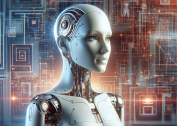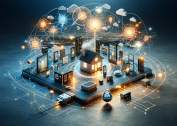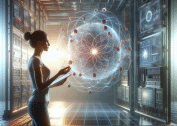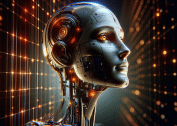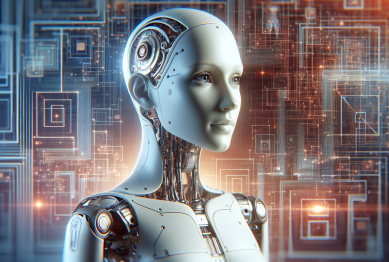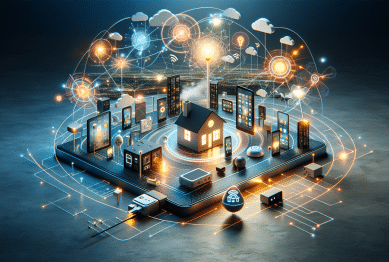Artificial intelligence is reshaping the world of tech and science at record speed. Explore the breakthroughs that make these systems so powerful, how they impact daily life and business, and what future innovations could mean for you. This guide uncovers the evolving landscape of AI and the opportunities ahead.
The Fundamentals of Artificial Intelligence
Artificial intelligence (AI) refers to computer systems able to perform tasks that once required human intelligence, such as recognizing speech, analyzing data, and making decisions. The keyphrase ‘artificial intelligence’ embodies how much ground this technology now covers. AI is not just about robots or science fiction; it powers many tools in daily life, from voice assistants on your smartphone to analytical software making sense of vast data sets. These intelligent systems operate using algorithms that can process and learn from enormous volumes of data, making them adaptable over time without explicit programming. As more industries pursue AI-driven solutions, understanding these basics equips anyone interested in the ongoing AI transformation.
At its core, artificial intelligence operates through machine learning, a subset of AI that teaches systems to improve at tasks through repetition. Image recognition, natural language processing, and advanced game-playing are classic applications of machine learning. Most notable progress has come from deep learning, a technique using multi-layered neural networks modeled after the human brain. This structure lets machines find subtle patterns or draw predictions from complex inputs, enabling applications that were previously thought impossible without a human. AI’s ability to self-improve and adapt is why it quickly gains traction across science, cybersecurity, healthcare, and beyond.
The development of AI also brings up vital questions about ethics, bias, and impact. How algorithms are trained influences the fairness and accuracy of the outcomes. If the data is biased, the AI can make skewed decisions. To create responsible AI, researchers establish guidelines and transparency in how models are built and used (Source: https://www.brookings.edu/research/algorithmic-bias-detection-and-mitigation-best-practices-and-policies-to-reduce-consumer-harms/). The growth of AI in research and industry has spurred a new generation to study not just what AI can do, but how to ensure it works for everyone.
How Artificial Intelligence Is Used Today
AI technologies power many daily services and behind-the-scenes systems, often without users even realizing it. For example, recommendation engines on major streaming platforms suggest shows tailored to each viewer’s habits using machine learning. Social media moderation, online shopping, and email spam filtering also use AI to scan messages, detect trends, and sort content for effectiveness and security. With AI in finance, algorithms can scan global markets at lightning speed, support fraud detection, or even automate trades, changing the way businesses manage data and risk (Source: https://www.mckinsey.com/capabilities/quantumblack/our-insights/how-artificial-intelligence-is-transforming-the-world).
Healthcare has seen some of the most significant benefits from AI, with AI-driven tools capable of analyzing X-ray images, diagnosing diseases, or modeling drug interactions in ways that enhance provider efficiency. AI supports clinical trials by sifting through massive research data sets, pinpointing patterns impossible to spot quickly by humans alone. The ongoing use of AI in medical research is already resulting in better diagnostic tools, faster identification of drug candidates, and in some cases, more individualized care (Source: https://www.healthit.gov/topics/artificial-intelligence-health-and-health-care).
Another vital use for AI lies in transportation and smart cities. Self-driving car prototypes and advanced traffic management systems use machine vision and predictive analytics, promising safer roads and lower emissions. Some cities are deploying intelligent sensors to monitor energy usage, detect water leaks, or identify maintenance fears before they cause wider problems. Technology leaders see such integration of AI into urban infrastructure as critical for managing population growth and environmental concerns.
Machine Learning and Deep Learning Explained
Machine learning sits at the heart of many modern advances in AI. By exposing an algorithm to large, varied data sets, engineers allow the system to build rules and relationships independently. This is how machines now outperform humans in written language translation, complex board games, or even weather forecasting. The critical difference between traditional programming and machine learning is simple: instead of a programmer writing every line of logic, the system writes its own playbook by observation and trial.
Deep learning takes this idea many steps further with neural networks that can learn in layers. These networks start with basic data and gradually extract abstract concepts. For example, in image recognition, early layers might detect simple edges and colors, while deeper layers learn to spot shapes or even faces. Deep learning applications include voice search, image tagging, and autonomous driving. Because of their layered structure, these systems require large computational resources—yet their accuracy often outpaces previous AI efforts by a wide margin.
Machine learning and deep learning are now the fastest-growing segments of AI research. There are new entry-level data science courses available for those hoping to get hands-on with AI, from global platforms like Coursera and edX. These courses introduce core concepts such as supervised, unsupervised, and reinforcement learning while offering tools that students can use even without prior coding knowledge (Source: https://www.edx.org/learn/data-science). By lowering entry barriers, more learners can participate in the AI revolution.
Artificial Intelligence and the Future of Work
AI’s expansion is changing how individuals and businesses work. In many industries, repetitive and data-heavy tasks are being given to AI algorithms, freeing workers for creative, strategic, or human-first responsibilities. For example, chatbots and automated customer service tools handle routine requests so teams can focus on complex support issues. In logistics, predictive AI can optimize routes, manage inventory, and reduce downtime, enhancing overall efficiency. These advances raise new questions about skill development, job adaptability, and lifelong learning.
Transitioning into an AI-driven workplace isn’t just about replacing jobs. It’s also about enabling new roles. AI specialists, data engineers, and even AI ethicists are now in demand, helping companies develop, test, and monitor advanced systems. Upskilling through online STEM courses, bootcamps, and university AI programs can prepare workers for career shifts. Collaborations between academic institutions and major tech companies have led to initiatives offering hands-on AI education, aiming to equip students with practical, job-ready knowledge (Source: https://www.nsf.gov/cise/ai.jsp).
However, the evolution of work involves careful planning around privacy, bias, and security. As AI becomes central to operations, companies must establish frameworks for governing AI use and handling sensitive data. Respect for transparency builds user trust and allows innovation to continue responsibly. The changing shape of work underscores the importance of adapting both individual skills and organizational policies for a future where artificial intelligence is foundational.
Risks and Ethical Considerations in AI Systems
Though AI offers impressive advances, its adoption is not without challenge. Security risks arise if an AI makes wrong decisions based on incorrect data. For example, facial recognition software can be less accurate among certain demographic groups if the training data lacks diversity, potentially resulting in unfair outcomes. Robust governance requires transparency in how models are designed, trained, and updated, balancing innovation with user safety (Source: https://www.nist.gov/artificial-intelligence).
AI developers have begun implementing technical safeguards, regular audits, and open communication about algorithmic choices. The field of explainable AI seeks to demystify how decisions happen, ensuring humans can understand and challenge automated conclusions when needed. This fosters accountability and fosters a collaborative approach to advanced AI deployment, with stakeholders reviewing models, data, and outcomes for unintended bias or harm.
Policy-makers, academics, and tech companies worldwide are building ethical guidelines for AI deployment. Laws and policies help clarify responsibilities and ensure those affected by AI have recourse for review or redress. The ongoing dialogue between research, industry, and the public is crucial for responsible AI growth. As awareness of these issues grows, so does society’s ability to direct AI development toward shared priorities.
AI Trends and What’s Next in Intelligent Systems
AI research moves rapidly, bringing new applications each year. In 2024, generative AI tools—capable of creating realistic images, music, or even writing—have captured public and professional interest. These models, such as large language models and creative neural networks, push the envelope on what machines can do independently. By leveraging massive data sets and powerful computing, generative AI has begun to assist in art, content production, and software design, hinting at a future where collaboration between humans and machines produces new forms of creativity (Source: https://www.pewresearch.org/internet/2023/08/28/the-future-of-ai-chatbots-and-virtual-assistants/).
Alongside creativity, AI empowers breakthroughs in scientific research. Automated labs, powered by AI, can run thousands of experiments, accelerating drug discovery, materials science, and climate modeling. As AI systems become more sophisticated, they work alongside researchers, identifying connections or hypotheses humans might overlook. The promise of ‘augmented intelligence’ is becoming real, as humans and AI together tackle complex challenges.
The future will demand new conversations about ethics, regulation, and societal change. Every time a technology like AI expands, it shapes the workforce, economy, and culture. Ongoing learning and broad-based AI literacy will be essential for individuals and organizations to thrive. As intelligent systems become ever more embedded in everyday life, understanding their trajectory helps everyone prepare for opportunities and challenges ahead.
References
1. Brookings Institution. (2023). Algorithmic bias detection and mitigation: Best practices and policies to reduce consumer harms. Retrieved from https://www.brookings.edu/research/algorithmic-bias-detection-and-mitigation-best-practices-and-policies-to-reduce-consumer-harms/
2. McKinsey & Company. (2021). How artificial intelligence is transforming the world. Retrieved from https://www.mckinsey.com/capabilities/quantumblack/our-insights/how-artificial-intelligence-is-transforming-the-world
3. HealthIT.gov. (2022). Artificial Intelligence in health and health care. Retrieved from https://www.healthit.gov/topics/artificial-intelligence-health-and-health-care
4. edX. (2024). Data Science Courses. Retrieved from https://www.edx.org/learn/data-science
5. National Science Foundation. (2024). National Artificial Intelligence Research Institutes. Retrieved from https://www.nsf.gov/cise/ai.jsp
6. National Institute of Standards and Technology. (2023). AI Risk Management Framework. Retrieved from https://www.nist.gov/artificial-intelligence

